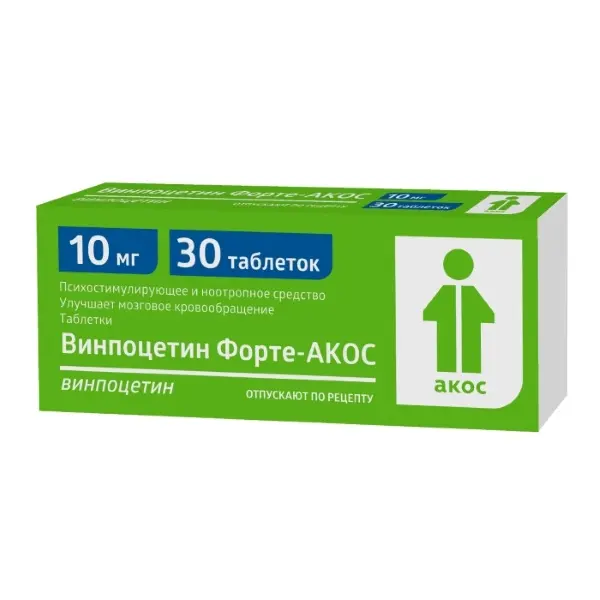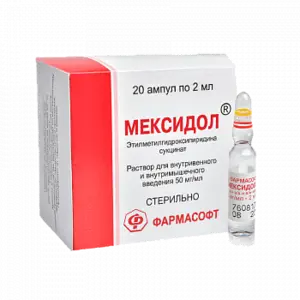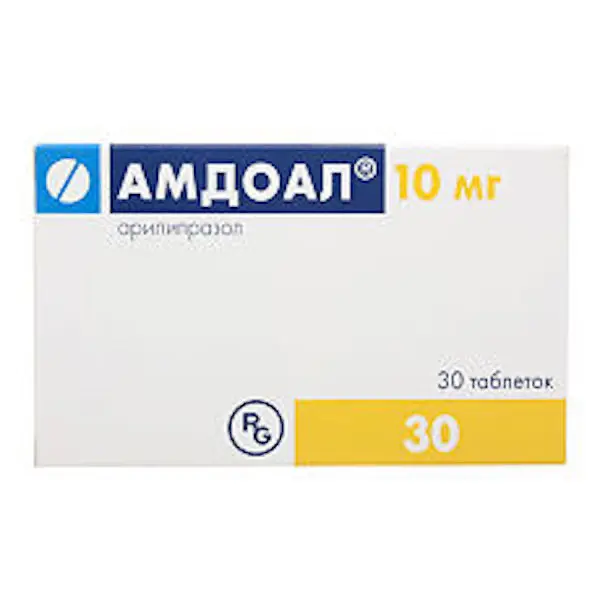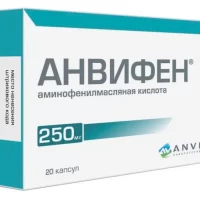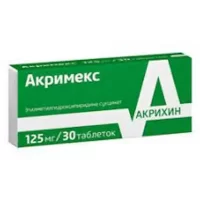Description
Vinpocetine Forte-Akos Pharmacodynamics
Vinpocetine action mechanism consists of several elements: it improves cerebral blood flow and brain metabolism, has a favorable effect on the rheological properties of blood.
Neuroprotective effect is realized by reducing the adverse cytotoxic effect of excitatory amino acids. It blocks potential-dependent Na+ and Ca2+ channels and NMDA- and AMPA-receptors. Enhances the neuroprotective effect of adenosine. Vinpocetine stimulates brain metabolism: it increases glucose and oxygen uptake and uptake. Increases tolerance to hypoxia; increases transport of glucose, the only source of energy for brain tissue, across the blood-brain barrier; shifts glucose metabolism toward the more energetically beneficial aerobic pathway. Selectively inhibits Ca2+-calmodulin-dependent cGMP-phosphodiesterase; increases brain cyclic adenosine monophosphate (cAMP) and cyclic guanosine monophosphate (cGMP), ATP concentration and ATP/AMP ratio in brain tissue; enhances serotonin and noradrenaline metabolism in the brain, stimulates the noradrenergic neurotransmitter system, and has an antioxidant effect; as a result of all these effects vinpocetine has a cerebroprotective effect.
It improves microcirculation in the brain by inhibiting platelet aggregation, reducing pathologically elevated blood viscosity, increasing the ability of red blood cells to deform and inhibiting adenosine capture; it promotes oxygen transfer to cells by reducing the affinity of red blood cells for it. Selectively increases cerebral blood flow by increasing the cerebral fraction of cardiac output and decreasing cerebral vascular resistance without significant effect on systemic blood flow (blood pressure (BP), cardiac output, heart rate, total peripheral vascular resistance); does not cause “stealing” effect. Against the background of vinpocetine use, blood supply to damaged (but not yet necrotic) areas of ischemia with low perfusion (“inverse effect of stealing”) improves.
Indications
Neurology: symptomatic therapy of ischemic stroke, vascular vertebrobasilar insufficiency, vascular dementia, atherosclerosis of cerebral vessels, post-traumatic and hypertensive encephalopathy.
Ophthalmology: chronic vascular diseases of the retina and choroid.
Otology: hearing loss of the perceptive type, Meniere’s disease, tinnitus.
To avoid complications, use strictly as prescribed by your doctor.
Contraindications
– Hypersensitivity to vinpocetine or other components of the drug.
– Pregnancy, breast-feeding.
– Rare hereditary diseases: galactose intolerance, lactase deficiency, glucose-galactose malabsorption.
– Childhood under 18 years of age (due to lack of data from clinical trials).
Caution
Long QT syndrome, use of drugs that cause prolongation of the QT interval.
Usage during pregnancy and lactation
Pregnancy
Vinpocetine crosses the placental barrier and therefore is contraindicated in pregnancy. Its concentration in the placenta and in the blood of the fetus is lower than in the blood of the pregnant woman. Teratogenic and embryotoxic effects have not been identified. In animal studies, placental bleeding and spontaneous abortions occurred when high doses were administered, probably as a result of increased placental blood flow.
Breastfeeding period
Vinpocetine penetrates into breast milk. In studies using labeled vinpocetine, the radioactivity of breast milk was ten times greater than that of maternal blood. Within 1 hour, 0.25% of the administered drug dose penetrates into breast milk. As vinpocetine penetrates into breast milk, and there is no data on the effect of vinpocetine on infants, its use during breast-feeding is contraindicated.
Dosage and administration
- Inside, after a meal.
- Usually, the daily dose is 15-30 mg (5-10 mg 3 times a day).
- The initial daily dose is 15 mg. The maximum daily dose is 30 mg.
- In kidney and liver diseases, the drug is prescribed in the usual dose; the absence of cumulation allows long courses of treatment.

